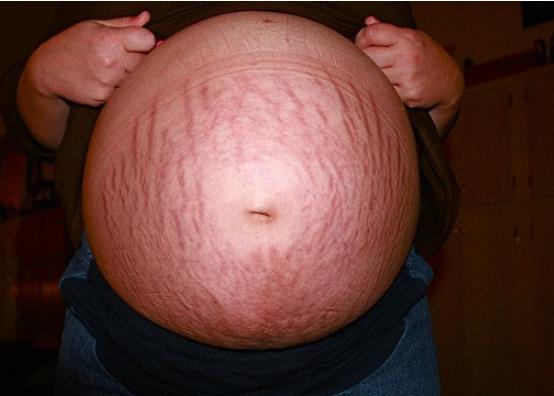Concerned you may have a low milk supply during breastfeeding? Learn the reasons why and how to boost breast milk supply to benefit both you and your baby.

Overview
A common concern particularly for new mothers is that they may have a low milk supply; as a result, many may feel that their baby may not be getting enough milk during breastfeeding because of this.
It is understandable and quite natural to have such thoughts.
Know that around the second trimester onwards your body is already preparing itself for that first moment when you are ready to start breastfeeding once your baby is born.
During the first few days, it is quite normal for some mothers to produce small amounts of milk at the start.
There are three stages of Breast Milk production, the first, is considered the most important for your newborn to help build up their immune system in the early days after birth.
This is quite possibly where many new mothers may feel that they may have a low breast milk supply but gradually this will increase as the days go by.
In general, a mother rarely suffers from a low milk supply as there is always more than one may notice.
Yet depending on how and what you do before, during, and after breastfeeding can determine some issues that may result in less milk being produced than normal which is covered further on.
Affiliate Disclaimer:
This article contains some affiliate links which means should you click a link and you purchase a product as a result, I may receive a small commission at no added cost to you.
Medical Disclaimer
I am not a doctor nor do I give any form of medical advice.
All information contained on this website, including information related to medical matters, health issues, treatments, and products, serves only for informational purposes.
It is not intended to replace the advice of your own doctor or specialist.
The information on this website is not intended to diagnose health problems or prescribe medications.
With health & safety, it is always important to discuss any changes you make in consultation with your prescribed doctor, especially if you may have other underlining conditions.
Please read my medical disclaimer at the bottom
The Three Stages of Breast Milk
Stage One: Colostrum
This is the first stage of Breast Milk your baby will receive from you.
Colostrum is the one benefit that can only be given by the mother.
Its color is normally a deep yellow and is often referred to as “Liquid Gold” due to the many benefits it has for your newborn.
This provides all the necessary nutrients and antibodies needed to help strengthen and protect your baby’s immune system and more during their early stages in life.
Colostrum is already being formed during pregnancy that is why for some you may see some leakage before the birth of your baby.
This is where disposable or reusable breast pads will come in handy.
Colostrum will become less over the next few weeks along with the consistency and color.
In the next stage known as Transitional Milk, colostrum will still be present but not as noticeable as in the first few days of milk production.
Stage Two: Transitional Milk
As stated, colostrum is still present however not as noticeable as now colostrum is being slowly replaced over the next few days for about 2 weeks before going onto the final stage of breastfeeding.
As you continue with your regular breastfeeding your breasts will be stimulated to produce more milk.
Here is where you may find that your breasts start to become fuller, heavier, and for some an increase in size.
As you still have colostrum within the transitional milk the color may be less yellow than the first stage but you still produce all the important nutrients and antibodies needed for your baby’s growth and immune system.
This phase also produces higher levels of fat, lactose, and vitamins along with more calories when compared to colostrum.
At this stage, you will start to see some original weight loss from your baby to be slowly gained back along with some more added growth.
There will always be growth spurts along the way during breastfeeding so always keep a check on your baby’s weight.
The Third Stage: Finally, Mature Milk
Here you are producing the final milk known as Mature Milk.
This normally occurs anywhere for most women around the second to even the early third week of breastfeeding onwards.
You will find that now you have mature milk being produced it will look more watery in the beginning then it becomes creamier as the fats are released later during feeding.
This mature milk has two separate types of mature milk that are being produced.
Fore-milk:
At the start of your feed, it will be thinner and more watery as it contains about 90% water.
This will also include all the other necessary proteins, fats, and carbohydrates needed to boost the energy levels along with growth.
Shortly after this in the same feed, the second type comes in.
Hind-milk:
This contains all the higher levels of fat and other essentials needed for the weight gain of your newborn.
All forms of milk are vital as is the need for regular breastfeeding in order to keep up with the demand and supply your baby needs (demand) and the breasts provide (supply).
Please Note:
Please know that I am not a doctor or any form of a medical consultant.
All details provided are for informational purposes and should you have any concerns for the health of your baby please first consult your health care provider or lactation consultant.
You can read more on my medical disclaimer at the bottom of this article if you wish.
What are some causes of low milk supply during breastfeeding?
Firstly if you feel you have a low milk supply or you believe your baby is not getting enough milk then please first consult your health care provider or lactation consultant for further assessment.
Also, you will already know with your healthcare provider if there are other medical issues you may have that could be a reason for the low milk supply.
11 most common reasons why you may have a low milk supply when breastfeeding.
- Difficulty in latching
- Infrequent feeding
- Maternal Sleep
- Using pacifiers or Nipple shields
- Poor nutrition with Mother
- Drinking alcohol
- Smoking (both legal and illegal)
- Bottle feeding in-between breastfeeding both water and formula
- Medication (refer to your doctor for this)
- Breast surgery
- Stress
Latching during Breastfeeds:
This is perhaps one of the most common reasons you may face issues of either low milk supply but also if the baby is not latching properly to the nipple can cause pain to your nipple and for some even cracking.
There are some nipple creams you can use both before in preparation for breastfeeding and in-between breastfeeding to not only relieve the pain and soreness but also to heal any issues you may have.
Infrequent feeding:
When your baby does not feed enough or regularly, the breast will start to get the message that milk is not needed as much which can mean a low breast milk supply.
Remember demand and supply.
The more regular feeds you give (demand) the more your breasts will start to produce milk (supply).
Babies need to be fed at least 8 – 12 times during a 24 hours period. Yes, I know this may give you a lack of sleep but is necessary for a healthy outlook for your baby.
This brings us to the next point which can easily relate to regular feeding times but also other areas in life.
Maternal Sleep:
The main issue many mothers feel they will face during regular breastfeeding times is a lack of proper sleep.
The need to breastfeed your baby 8-12 times within a 24 hours period can take its toll on you trying to get the recommended 7-9 hours of sleep.
This is another major reason why many mothers take to bottle feeding instead of regular breastfeeding.
This action also contributes greatly to low milk supply, Remember demand and supply?
It is easy to use a bottle-fed formula to lessen the time so you can get sleep.
However, especially during the first six months can do more harm than good.
Formula-fed ingredients will never replace the mother’s natural benefits that only breast milk can provide.
Statistically, a study done by Researchgate found that there is no real difference in maternal sleep between mothers who breastfeed and mothers who bottle feed.
In fact, they both have about the same amount of sleep
Nipple Shields
The use of Nipple shields can go both ways.
On a positive note, they can be beneficial short-term when the baby is unable to latch on to your breast properly.
Another benefit is when the mother’s nipples may be cracked, inverted, or flat.
However, the downside of Nipple shields can also cause a low milk supply when your baby is unable to transfer enough milk.
Due to the inability of the baby not being able to absorb milk due to a nipple shield not only can you have a low milk supply but other issues can occur such as plugged ducts and mastitis as the drainage of milk become ineffective.
Mother’s Personal Nutrition
We all know that proper nutrition is important to everyone and more so with mothers as now they are looking after their newborns.
Both during pregnancy and during breastfeeding it is very important to watch what you eat and drink as this can easily pass through to the unborn or once born during breastfeeding.
Here you will need to add some extra calories to your diet normally around 300 more each day because of breastfeeding.
Nutrients such as protein, calcium, vitamins, minerals, and iron are the main areas of need.
Drinking, smoking
Sorry mothers, but drinking alcohol along with certain drinks containing caffeine such as tea, energy, or soft drinks should also be avoided.
Smoking is another issue that is of no benefit to your child (both legal and otherwise) and should be avoided as much as possible if not totally.
Besides the money saved can go for nappies and other essentials needed for the baby.
‘Not to mention your own health can benefit from this as well.
Replacement milk or other fluids
One of the big temptations for new mothers is to bottle feed either with formula or water in between breastfeeding.
This will definitely lower the need for the body to produce breast milk as you are giving signals to your breasts that milk is not needed and as a result, less milk will be produced.
The other fact is newborns do not need water, especially during the first 6 months as this can do more harm than good.
Giving water can actually interfere with a baby’s ability to receive proper nourishment.
All the hydration a baby needs can be provided by breast milk even on hotter days.
Giving water to a baby under six months not only interferes with their ability to absorb the nutrients from breast milk but can also create the baby’s electrolyte balance which according to Healthychildren.org can cause seizures.
Although it is important not to give water to your baby this doesn’t mean that you shouldn’t drink water.
Your body needs the added hydration not only for yourself but to boost the natural flow of your breastmilk with all the necessary nutrients your baby needs.
Medication:
Here it is best to consult with your doctor as some mothers may be using medication for other reasons.
Although many medications might be fine when breastfeeding it is best and safer to check with your health care provider to make sure what you are taking won’t create further problems when breastfeeding your baby.
This can also include herbal medicines as well.
Breast surgery:
There are times when breast surgery can go wrong and may for some, create issues with damage or blocked milk ducts that can interfere with milk production.
Talk to your health care provider and/or lactation consultant who would be best to advise you further on what action may need to be taken.
Stress:
Stress including maternal stress due to lack of sleep and all that still goes on around you can create a low milk supply.
If you are able to get support from your partner, family, or friends to help you out at times such as cleaning, etc. makes a big improvement to your stress levels.
What you need to do is also try to sleep (easier said than done at times) every moment you get so when you are feeding your baby you are not as tired and worried during breastfeeding.
Meditation is a wonderful way to learn how to real.
Taking a warm bath can help not only ease some pain but help to relax the body.
How Do I Know If I Am Making Enough Milk?
When you are pumping breast milk it is easy to see how much milk is being produced, however, it’s not as clear cut when breastfeeding as you may not be sure how much your baby is getting.
8 ways you can tell that your baby is getting enough milk during breastfeeding.
- Look and how many wet and heavy nappies each day which should be around 6-8.
- When your baby is receiving adequate breast milk along with getting the hydration they need their pee would be colourless.
- During the first few days baby’s poo will be black in colour which is normally then it will change to a yellow mustard colour as you breastfeed more often and regularly.
- As you regularly breastfeed you will find your baby is not constipated.
- In the first few days your baby will lose some of the initial birthweight again this is normal. But over the next few days you will see a gradual increase in weight generally around 5-7 Oz’s or 150-200 grams per week.
- Pay attention to the way your baby is feeding if they seem to be gulping and swallowing their milk this shows they are getting adequate milk and are most likely enjoying it in the process.
- Also you may see that some babies will not be as noisy as the gulpers but nevertheless are still enjoying swallowing their milk.
- More settling, peace, and contentment during breastfeeding is another wonderful sign they are getting enough milk.
How to Boost Breast Milk Supply?
- Frequent breastfeeding at least 8-12 times a day is the best way to produce your breast milk supply, and quickly.
- When your baby is finished with one breast offer the other one to not only give a good feed but also to let your body know it needs to produce more milk.
- Learn to relax as stress and tension can affect not only the body but also your ability to produce milk.
- Make sure your nutrition is good and balanced and drink at least two litres of water per day to ensure you are well hydrated which will help keep the breasts functional normally.
- Re-read some of the areas above on why milk supply may be low as this is vital for health nutrition for both you and your baby.
- This includes cutting down on smoking preferably giving up along with having no more than 2 cups of caffeine per day.
- Caffeine is known to dehydrate the body.
- This also includes soft drinks, tea, and other products containing caffeine.
- Did you know that skin-to-skin contact with your baby can encourage milk let-down?
- It also creates a stronger bond between you both.
- This is one of the main reasons you are giving your baby straight to your breasts during birth to connect aside from breastfeeding.
- Massaging the breasts before and during expressing, benefits in helping your milk let-down.
How long should I breastfeed my baby?
According to the World Health Organization, it is recommended to breastfeed for six months of only breastmilk.
However, this also becomes a personal choice and what works for you and your baby is what matters.
You can still continue to breastfeed until 12 months or longer as breastfeeding has so many benefits for both of you.
Normally, it is after six months that you can slowly introduce other fluids or solids together with breastfeeding for up to 2 years.
Now, this will also be dependent on the mother and the baby’s needs and how well they are going but that is the recommended time.
Summary
• One of the best ways to boost milk supply when breastfeeding, is to feed regularly at least 8-12 times a day.
• Ensure your baby’s nappies are heavy and wet to show they are receiving all the benefits of breast milk.
• Your nutrition as a mother is important to keep up with drinking more water, avoid elements such as smoking, alcohol, and caffeine.
• Eat nutritious snacks and avoid spicy foods.
• Avoid stress and learn to relax more as this can affect your milk production supply.
• Feed on both breasts to ensure milk is being used at each feed as this will let the body know it needs to produce more milk.
• Using a breast pump after feeding can help to boost milk supply along with creating additional milk for later which can be frozen for another day.
• Do not give anything else during the first six months your breastmilk provides all the essential nutrients your baby needs at this time.
• The less you feed or if you do swap to do other methods will greatly reduce your ability to create more milk hence you may find a low milk supply as a result.
• Massage your breasts before feeding to promote a good letdown when feeding.
• Monitor any issues you may have with your nipple especially if they become painful.
• Of course if you have any medical issues or concerns please see your lactation consultant or health care provider.
If you have anything you wish to share with your experience please place a comment below and I will respond ASAP.
Thank you for reading about how to learn to boost your milk supply and any other related issues you may have or feel about having a low milk supply






